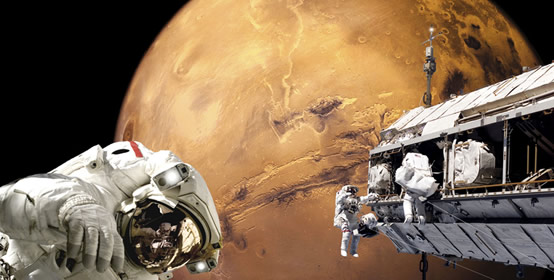
The concept of planning a manned mission to Mars has been a topic of ongoing discussion and debate since the 1950's. In each decade since, conferences, universities and international organizations from both the public and private sector have proposed different tactics to turn this goal into a reality. In late 2015, NASA finally released its own official three-phase plan for reaching Mars. Of particular note: the first phase of this plan is already underway. Read on for the freshest updates on NASA's unfolding plan.
This outline covers the three phases proposed by NASA to enable a manned mission to reach Mars.
The most pressing stumbling block to this ambitious but not unreasonable three phase plan is funding. With an estimated price tag at anywhere from $500 billion to $1 trillion, it is already clear NASA will not be able to fund this undertaking solo. However, the usual partner choices are suddenly no longer available.
Here is what is going on with NASA's former proposed Mars partners:
This makes private partners a much more logical and likely choice for NASA moving forward.
Here are some potentially viable private sector partner candidates with complimentary interests in reaching Mars:
Both SpaceX and Blue Origin have worked with multiple other private partners that already contract with the U.S. government to provide technology and resources to NASA, including the United Launch Alliance (ULA), a partnership between Lockheed Martin and Boeing Defense, Space & Security.
As it turns out, Congress seems to think NASA is at least well-funded enough to begin work on a prototype of habitation capable of sustaining life on other planets.
Specifically, Congress wants NASA to use $55 million of its $19.3 billion allotted budget monies to develop and test such a prototype - and preferably by 2018. But it only has 180 days to turn in its first status report on these new marching orders.
NASA's current private partners for this undertaking, which has been dubbed Next Space Technologies for Exploration Partnerships, or NEXTSteps. These four partners include Boeing, Bigelow Aerospace, Orbital ATK and Lockheed Martin, with Bigelow being an early frontrunner with its prototype “inflatable habitat” (technically called the Bigelow Expandable Activity Module)
While there is no way to predict with certainty at this point precisely how future plans will unfold from here, what does seem relatively certain is that a manned mission to Mars is absolutely in NASA's future.